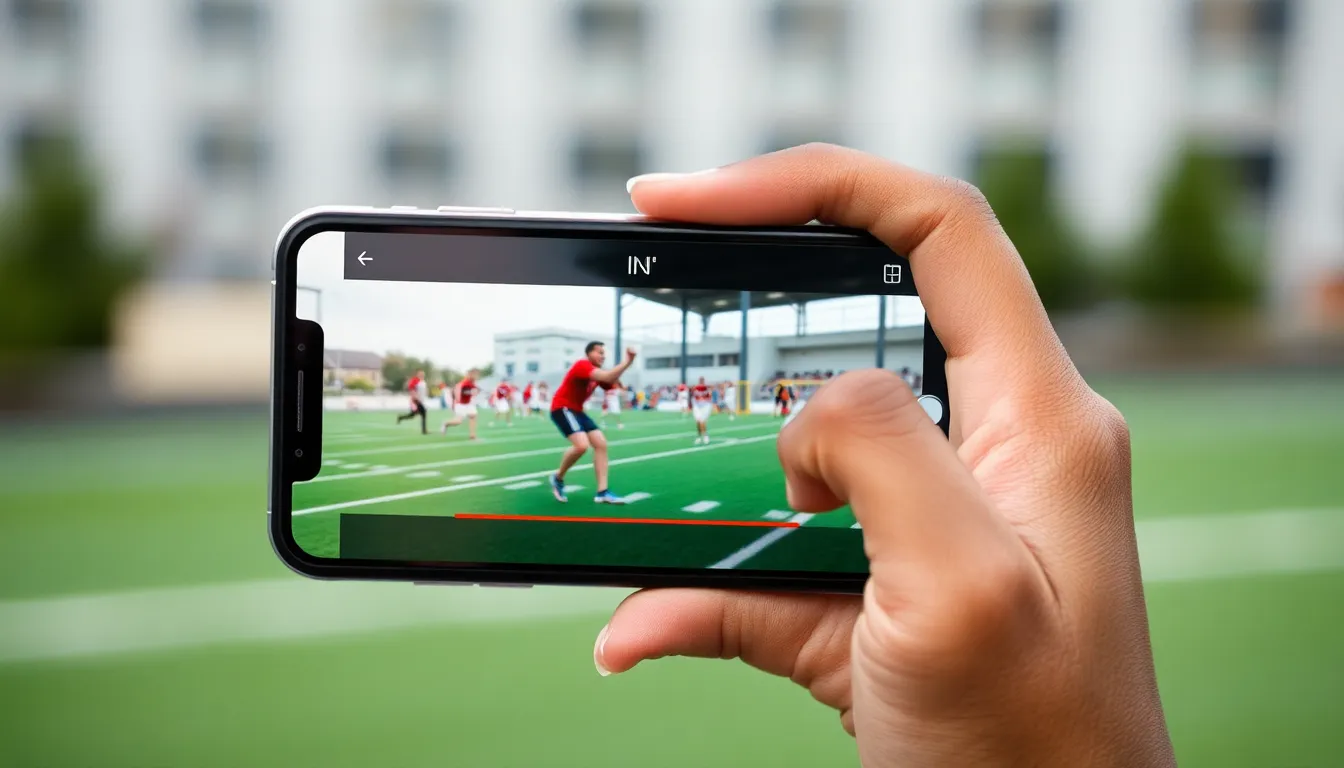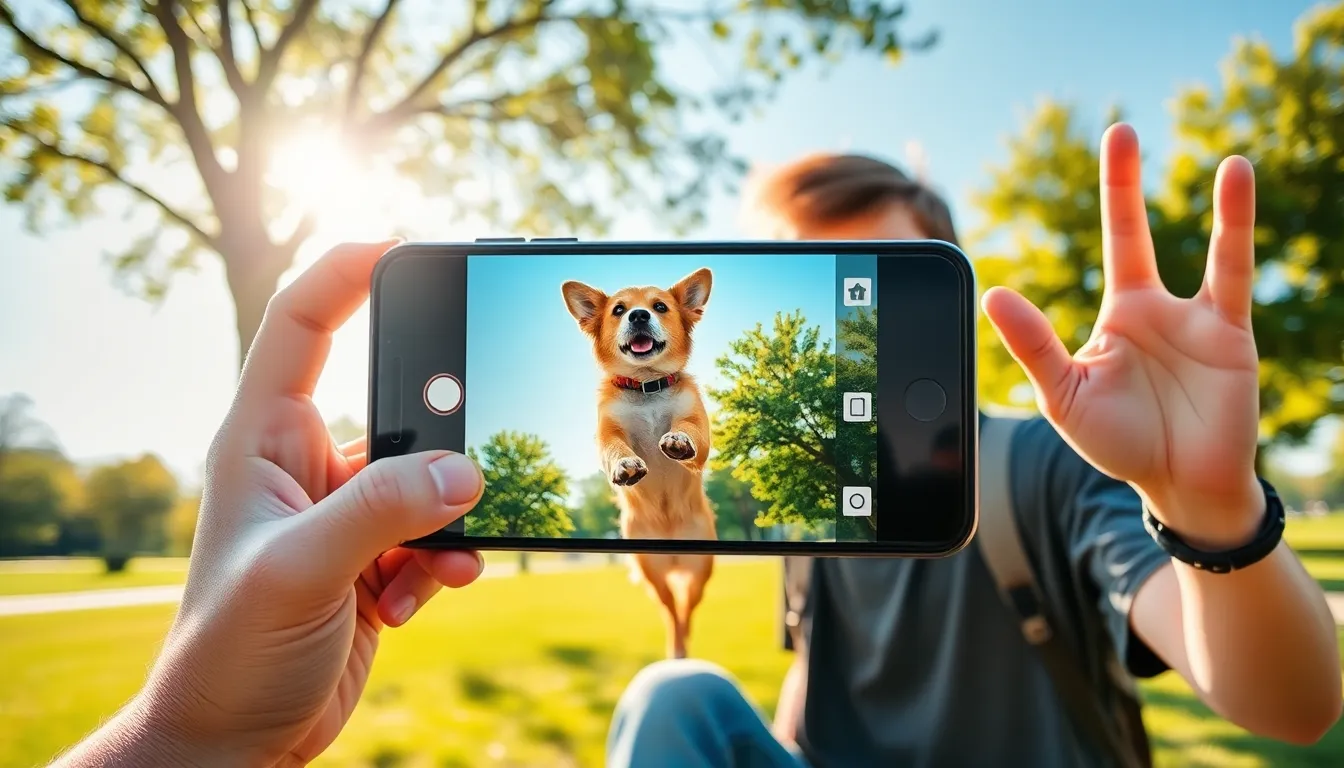Ever watched a video and thought, “Wow, that would be epic in slow motion!”? If so, you’re in for a treat. With just a few taps on an iPhone, you can transform your everyday moments into cinematic masterpieces that would make even Hollywood jealous. Whether it’s your dog’s hilarious leap or that epic cake smash at a birthday party, slowing down the action adds a dramatic flair that’s hard to resist.
Table of Contents
ToggleOverview of Slow Motion Features on iPhone
iPhone users enjoy several slow-motion features that enhance video recording. The iPhone allows recording at different frame rates, including 120 frames per second and 240 frames per second. These options create a smooth and captivating slow-motion effect during playback, ideal for showcasing fast-moving subjects.
Editing slow-motion videos is straightforward with the built-in Photos app. Users can adjust the duration of slow motion, emphasizing specific moments while maintaining the natural flow of the video. Each section of the video can have its speed altered, enabling creators to focus on key dramatic moments.
Additional options enhance the slow-motion experience. Users can access various settings, like exposure and white balance, ensuring optimal lighting conditions for the best results. Transitioning from regular speed to slow motion adds a professional touch that elevates the overall video quality.
Popular among iPhone users, these features transform ordinary clips into impressive scenes. Everyday moments benefit greatly, capturing actions like playful pets or thrilling sports events. Using slow-motion can also invoke emotions, turning simple memories into memorable cinematic experiences.
Slow-motion video captures the excitement found in life’s little moments. iPhone consistently provides tools that make creating impactful videos easy and enjoyable.
How to Slow Mo a Video on iPhone

Slowing down video on an iPhone adds a dramatic effect, enhancing the viewing experience. Several methods exist to achieve this, both during recording and editing.
Using the Native Camera App
Open the Camera app to access the slow-motion feature. Tap the “SLO-MO” option located next to the “PHOTO” mode. Prior to recording, choose a frame rate from the settings—either 120 or 240 frames per second for different effects. Aim the camera at the action, then tap the red record button. End the recording by tapping it again. Preview the slow-motion playback directly in the Photos app, allowing for an immediate assessment of the captured moment.
Editing Existing Videos
Editing existing videos for slow motion is straightforward. Start by opening the Photos app and selecting the video in question. Tap “Edit” in the upper right corner. Next, locate the slow-motion slider presented at the bottom of the screen. Adjust the slider to determine which sections play in slow motion, effectively emphasizing key moments within the video. Save the changes by tapping “Done.” This method provides an effective way to enhance previously recorded videos without requiring an additional recording session.
Tips for Best Results
Optimizing slow-motion video involves several factors for impressive results. Focusing on lighting and stabilization enhances overall quality.
Choosing the Right Lighting
Natural light significantly improves video quality. Filming during golden hour, shortly after sunrise or before sunset, provides soft and flattering lighting. When indoor, position the subject near large windows for increased brightness. Avoid harsh shadows by adjusting angles or using diffusers. Capturing footage in well-lit conditions reduces graininess and enhances detail. For a more dramatic effect, consider using additional artificial lights where necessary.
Stabilizing Your Footage
Stabilization protects against shaky footage. Using a tripod or gimbal stabilizer yields smoother results, especially for fast-paced action. Holding the iPhone with both hands provides added stability during handheld shots. In some situations, using the body to brace the camera can help maintain steadiness. Editing software may also offer stabilizing features for post-production adjustments. Employing these techniques ensures that the slow-motion footage looks polished and professional.
Common Issues and Troubleshooting
Slow-motion video on an iPhone can occasionally present challenges. Users may experience lagging playback if the device runs low on storage space. Freeing up memory often resolves this issue, allowing smoother performance during video editing and playback.
Another common problem involves improper frame rate selection. If users select a frame rate that exceeds the capabilities of their device or the lighting conditions, playback may appear jittery. Choosing a frame rate of 120 or 240 frames per second typically delivers optimal results for slow-motion videos.
Lighting plays a significant role in video quality. Poor lighting can result in grainy footage, especially with high frame rates. Filming in well-lit environments or utilizing supplementary lighting improves overall video clarity and enhances slow-motion effects.
Audio sync issues can arise when recording slow-motion videos. This situation may occur due to differences in frame rates that cause audio and video to desynchronize. Re-encoding the video using editing software often resolves this problem.
Errors may also occur during the editing process in the Photos app. Users might encounter difficulties when adjusting the slow-motion slider, making it challenging to highlight key moments. Restarting the app or the phone can help restore normal functionality.
Finally, exporting problems can impede the sharing of slow-motion videos. If videos fail to export correctly, users should check the video format and ensure enough storage is available. Adjusting the export settings or using alternative sharing methods frequently helps overcome this hurdle.
Capturing life’s moments in slow motion on an iPhone can elevate even the simplest events into memorable cinematic experiences. With user-friendly features and editing tools, anyone can create stunning videos that highlight the excitement of everyday life. By optimizing lighting and using stabilization techniques, users can ensure their slow-motion footage looks polished and professional.
Whether it’s a playful pet or a festive celebration, slow-motion video adds a unique touch that resonates with viewers. Embracing these techniques not only enhances creativity but also transforms ordinary memories into extraordinary visual stories.




